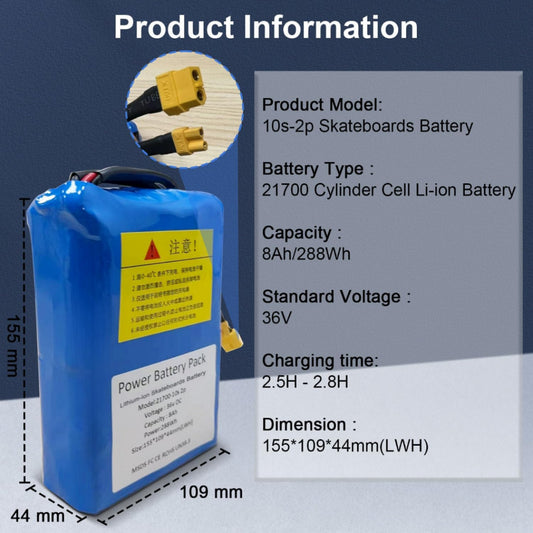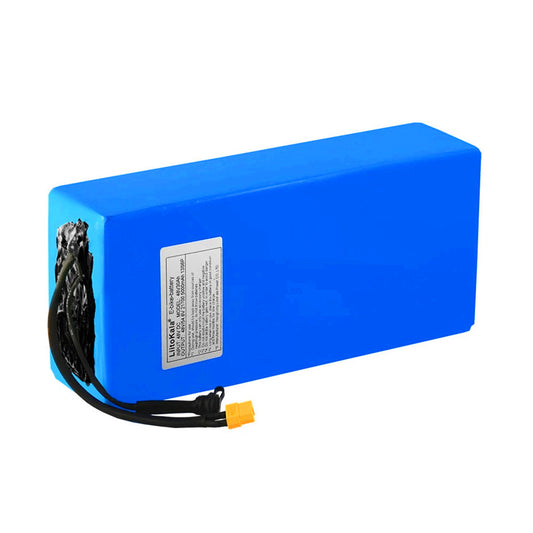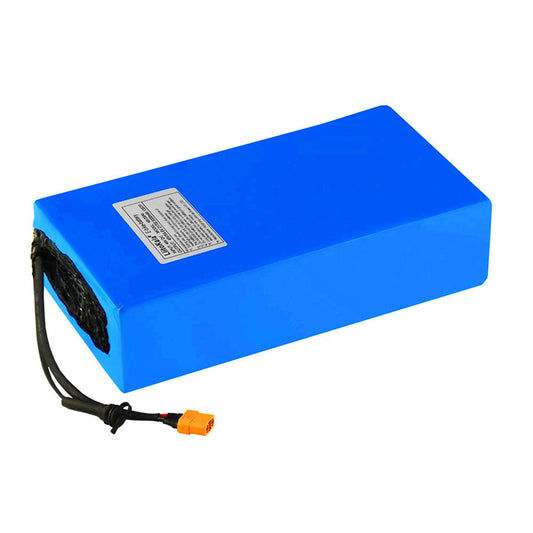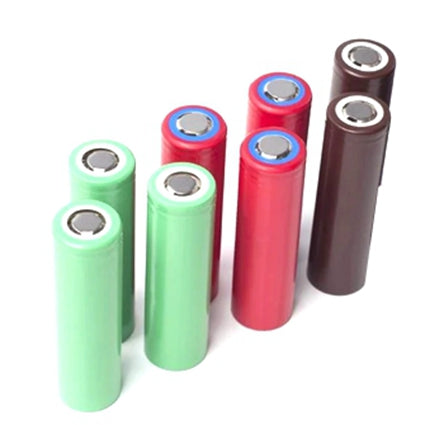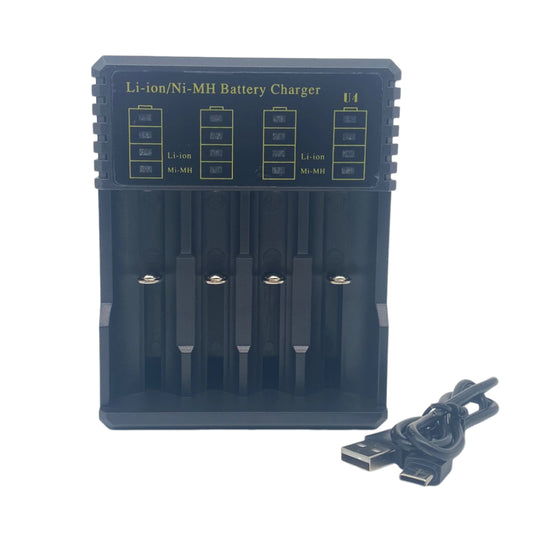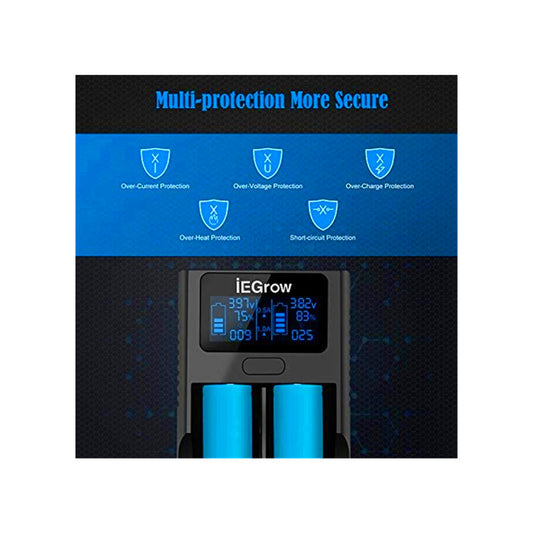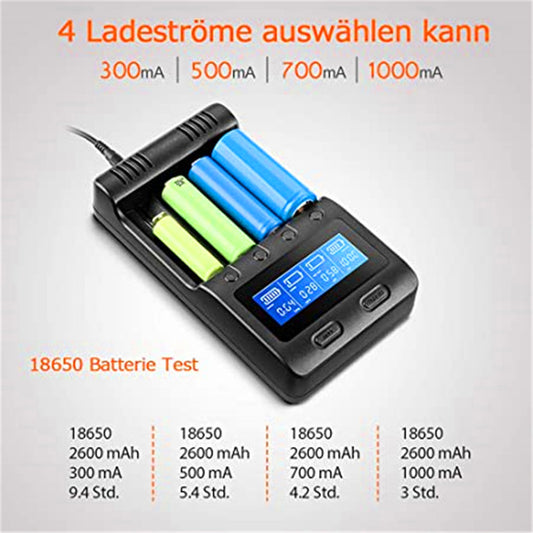The 18650 cylindrical batteries were developed in the early 1990s. As lithium-ion batteries, they are used in laptops, e-bikes, and even electric cars (Tesla).
However, the first generation of 18650 batteries had a lot of room for improvement. In 2017, the 21700 battery was born. This article compares these batteries from all points of view and answers some frequently asked questions.
What is an 18650 battery?
The 18650 battery is a rechargeable lithium-ion battery. It's commonly used in various electronic devices, measuring approximately 18mm in diameter and 65mm in length.
The popularity of this cylindrical battery is due to its combination of capacity, durability, and voltage stability, making it a reliable choice for battery packs in consumer electronics, electric vehicles, power tools, and even laptops.
What is a 21700 battery?
The 21700 battery is a lithium-ion battery. This lithium-ion battery has a dimension of 21mm in diameter and 70mm in length. It has a higher energy capacity and longer life. Therefore, it is widely used in electric vehicles, portable power tools, and energy storage systems.
These batteries also feature built-in safety mechanisms. The safety mechanisms protect against overcharging, over-discharging, and overheating, increasing reliability and safety in various applications.

21700 battery vs 18650 battery in different ways
1. Price comparison
Generally, 21700 batteries tend to be pricier than the 18650 batteries. Due to their higher capacity and energy density, 21700 batteries have longer runtime and higher power output for devices. For instance, the price for a Samsung INR21700-30T might be around $8.99, whereas an LG MJ1 18650 could be priced at about $4.49.
However, costs can vary widely based on brand and capacity. Prices also differ for protected versions of these batteries. Protected batteries have a built-in circuit that prevents overcharging and over-discharging. Notably, protected 21700 batteries can be 20% to 40% more expensive than protected 18650 batteries.
You can also browse KEEPBATT for high-performance and quality AA batteries, 21700 battery packs, and 18650 battery packs.
2. Comparison in different dimensions
Batteries are usually compared by their capacity, energy, energy density, and cycle life, here is the overall comparison chart between 21700 and 18650 batteries:
| Dimension | 18650 Batteries | 21700 Batteries |
| Capacity | Typically 1800mAh to 3500mAh | Typically 3000mAh to 5000mAh |
| Energy | Around 6.4 Wh to 12.9 Wh | Around 11 Wh to 18 Wh |
| Energy Density | Approx. 250 Wh/L to 730 Wh/L | Approx. 250 Wh/L to 730 Wh/L |
| Cycle Life | Usually 300 to 500 cycles | Generally 300 to 500 cycles, potentially higher with newer technology |
| Loading | Standard charge currents of 0.5C to 1C | Higher charge currents possible, up to 1.5C |
| Self-Discharge Rate | About 2% to 3% per month | About 2% to 3% per month |
-
Capacity measures how much charge a battery can hold, indicating the battery's endurance under normal usage conditions.
-
Energy determines how long a device can operate before the battery needs to be recharged.
-
Energy density measures the amount of energy in a battery relative to its size or weight. Higher energy density means more power with less bulk.
-
Cycle life indicates longevity and reliability.
-
C-rate indicates how quickly a battery can be charged or discharged. Higher rates are beneficial for rapid charging and high-power applications but can stress the battery and reduce its lifespan.
-
Lower self-discharge rates are preferable for applications where the battery may not be used frequently.
-
Both 18650 and 21700 batteries have the same nominal voltage of about 3.7 volts

3. Comparison of different usage
The main differences between the 18650 and 21700 batteries are size, capacity, and intended use. The smaller 18650 battery is widely used in portable electronics, power tools, and small electric vehicles. On the other hand, the 21700 battery is larger and offers higher capacities for applications that require more power and longer run times, such as larger electric vehicles and energy storage systems.
Both batteries offer reliable performance, but the choice between them should be based on needs related to device size and power requirements.
4. Safety comparison
18650 and 21700 lithium-ion batteries both offer robust safety features. 18650 batteries have a lower energy density. So they can minimize the severity of incidents if they fail. In contrast, 21700 batteries hold more energy (3000mAh to 5000mAh). These can release more energy suddenly in the event of a failure, presenting higher risks.
Despite their differences, both batteries use advanced battery safety valve technology. This technology can effectively prevent the battery from overheating, overcharging, and over-discharging. The function of the safety valve is to reduce the pressure when the internal pressure of the battery becomes too high. As a result, it prevents the battery from exploding and ensures user safety.
Why does Tesla use the 21700 battery instead of the 18650 battery?
Tesla has upgraded its electric vehicle batteries from 18650 to 21700. This upgrade provides higher efficiency and better performance. Compared to 18650 cells, 21700 cells deliver 50% more energy. For this reason, 21700 cell packs increase the EV range by up to 20%.
In addition, 21700 enables more efficient battery pack design and more effective heat dissipation. It results in improved vehicle performance and battery safety. These improvements also reduce costs, lowering the cost per kilowatt-hour by approximately 10-15%. This strategy positions Tesla as a leader in electric vehicle technology and increases its competitive advantage.
In conclusion
Tesla's switch to the 21700 battery from 18650 is because of the 21700's higher energy capacity, better power density, and greater efficiency.
These advantages of 21700 batteries can also be taken into account when we choose a more suitable battery for various devices. On the other hand, the 18650 can be used in many portable devices due to its lower price and smaller size.
FAQs about 21700 battery vs 18650
1. Can you interchange 18650 with 21700?
No, you generally cannot interchange 18650 and 21700 batteries due to their differences in size and specifications. The 18650 battery is typically 18mm in diameter and 65mm in length, while the 21700 battery is 21mm in diameter and 70mm in length. The size difference means that 21700 batteries won't fit in 18650 compartments, and vice versa.
In addition, substituting one battery for another can be risky. It's important to consider the power requirements and battery specifications of the device. Failing to do so can lead to performance problems and even safety risks.
2. Can 18650 batteries and 21700 batteries use fast charging?
Fast charging can adversely affect the life and performance of both 18650 and 21700 batteries. This charging method generates more heat, which can degrade the battery's electrolyte and active materials, potentially leading to a shorter lifespan.
Using high-quality chargers designed specifically for lithium-ion batteries can extend battery life.
3. Can an 18650 charger charge a 21700?
Most 18650 chargers can also charge 21700 batteries. Both types are similar in size and can fit into the same charging slot of the charger. However, it is best to check the charger's specifications to ensure it supports charging 21700 batteries.
4. What is the difference between 18650 and AA batteries?
18650 batteries are rechargeable lithium-ion cells known for their high energy density. They are often used in high-drain devices like laptops and electric vehicles.
In contrast, AA batteries can be disposable or rechargeable and are typically used in low-power devices such as remote controls and toys. They have a standard voltage of 1.5 volts, unlike the higher voltage of 18650 cells.
Related: 18650 battery Vs AA



